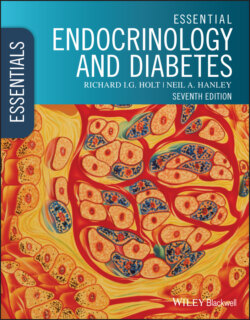Читать книгу Essential Endocrinology and Diabetes - Richard I. G. Holt - Страница 47
Synthesizing hormones derived from cholesterol
ОглавлениеSteroid hormones are generated by enzyme cascades that modify the four‐carbon ring structure of cholesterol (Figure 2.6). The precise sequence of enzyme action determines which steroid hormones are generated (Box 2.5). In addition, cholesterol is a critical building block of all mammalian cell membranes and the starting point for synthesizing vitamin D, which functions, and can be classified, as a hormone (Chapter 9). Cholesterol is acquired in approximately equal measure from the diet and de novo synthesis mostly in the liver. Dietary cholesterol is delivered to cells as a complex with low‐density lipoprotein (LDL–cholesterol). Intracellular uptake is via the cell‐surface LDL receptor and endocytosis (Figure 2.3b). De novo biosynthesis commences with coenzyme A (CoA) synthesized from pantothenate, cysteine and adenosine, and proceeds via hydroxymethylglutaryl coenzyme A (HMG‐CoA) and mevalonic acid (Figure 2.5). The rate‐limiting step is the reduction of HMG‐CoA by the enzyme HMG‐CoA reductase. Pharmacological inhibition of this enzyme to treat hypercholesterolaemia and lessen cardiovascular disease has led to the most widely prescribed drug family in the world (the ‘statins’) and the award of the Nobel Prize to Michael Brown and Joseph Goldstein (Table 1.2).
